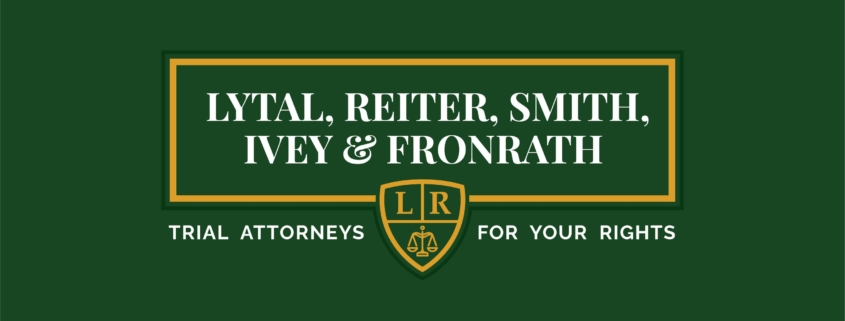The seven most dangerous roads in Fort Lauderdale: Your guide to high-risk areas
You’ve probably seen this headline if you live in Fort Lauderdale: “Broward County is home to America’s deadliest mile.” The 2024 article tells of the deadly one-mile strip of I-95 between the I-595 interchange and Marina Mile Boulevard, where 24 people died in collisions between 2000 and 2019.
Unfortunately, “America’s deadliest mile” isn’t the only road in Fort Lauderdale plagued by collisions and fatalities. Below, our Fort Lauderdale car accident lawyers highlight six other hotspots for crashes, serious injuries, and fatalities in and around the city, plus factors contributing to the high accident rates and what to do if you’re involved in a collision on one of these treacherous stretches.
Fort Lauderdale’s most dangerous roads and intersections
1. Interstate 95 (I-95)
I-95 consistently ranks as one of Florida’s deadliest highways, with the Fort
Lauderdale stretch being particularly hazardous. According to Florida
Department of Transportation (FDOT)
data,
this section experiences:
- Higher rates of fatal crashes than the state average
- Frequent multi-vehicle collisions during peak hours
- Dangerous merging areas, particularly at the interchanges with Broward Boulevard and Sunrise Boulevard
The combination of high speeds, heavy traffic volume, and complex interchanges makes I-95 a frequent site for serious accidents. Under Florida Statute § 316.183, drivers must adjust their speed to road conditions, yet many fail to do so during congested periods or inclement weather.
2. Federal Highway (US-1)
US-1 runs through the heart of Fort Lauderdale and presents numerous hazards:
- Multiple high-risk intersections, particularly at Sunrise Boulevard and SE 17th Street
- Frequent pedestrian crossings in areas with poor visibility
- Heavy tourist traffic unfamiliar with local road patterns
The section between Sunrise Boulevard and SE 17th Street has been identified as a high-crash corridor by local transportation authorities, with pedestrian accidents being a particular concern.
3. Broward Boulevard
As one of Fort Lauderdale’s main east-west thoroughfares, Broward Boulevard experiences:
- Heavy congestion during morning and evening rush hours
- Multiple conflict points at major intersections
- High rates of rear-end collisions due to stop-and-go traffic
The intersection of Broward Boulevard and Andrews Avenue is particularly notorious for crashes, often involving drivers violating Florida Statute § 316.074, which mandates obedience to traffic control devices.
4. State Road 7 (US-441)
SR-7 runs along the western edge of Fort Lauderdale and presents unique challenges:
- High-speed traffic mixed with frequent business entrances and exits
- Poor lighting in certain sections
- Dangerous left-turn scenarios across multiple lanes
The corridor has been the focus of several FDOT safety improvement initiatives due to its high crash rates.
5. Sunrise Boulevard (SR-838)
This major east-west corridor experiences:
- High rates of side-impact crashes at intersections
- Pedestrian safety issues, particularly near the beach areas
- Motorcycle accidents due to heavy motorcycle traffic
The intersection of Sunrise Boulevard and Federal Highway is among the most dangerous in Broward County.
6. Las Olas Boulevard
While not typically associated with high-speed crashes, Las Olas Boulevard presents unique risks:
- Heavy pedestrian traffic in entertainment districts
- Frequent bicycle-vehicle conflicts
- Tourist congestion and distracted driving
The areas near the beach and the downtown entertainment district are particularly prone to accidents involving pedestrians and cyclists, often involving violations of Florida Statute § 316.130, which governs pedestrian rights and duties.
7. Sample Road
Although partially outside Fort Lauderdale city limits, Sample Road affects many Fort Lauderdale residents and visitors:
- High-speed traffic despite multiple traffic signals
- Complex intersections with poor visibility
- Frequent lane-changing collisions
Common factors contributing to accidents on Fort Lauderdale’s dangerous roads
Tourist traffic
Fort Lauderdale’s status as a tourist destination means roads are often filled with drivers unfamiliar with local traffic patterns. This contributes to:
- Sudden lane changes and missed turns
- Confusion at complex intersections
- Distracted driving while using GPS or looking for destinations
Severe weather conditions
South Florida’s climate presents unique driving challenges:
- Sudden heavy downpours reducing visibility
- Flooded roadways creating hydroplaning risks
- Strong winds affecting vehicle stability
Florida Statute § 316.185 requires drivers to exercise due care during adverse weather conditions, yet many accidents occur when drivers fail to adjust to these conditions.
Urban congestion
Fort Lauderdale’s growing population and limited road infrastructure lead to:
- Stop-and-go traffic increasing rear-end collision risks
- Aggressive driving behaviors including tailgating and unsafe lane changes
- Road rage incidents
Pedestrian and cyclist interactions
As Fort Lauderdale promotes more walkable communities:
- Increased pedestrian crossings on high-traffic roads
- Bicycle lanes adjacent to fast-moving traffic
- Conflicts between vehicles and non-motorized transportation
Florida Statute § 316.2065 outlines bicyclists’ rights and duties, but awareness and compliance remain problematic.
Safety tips for navigating Fort Lauderdale’s most dangerous roads
Plan alternative routes
- Use navigation apps to identify less congested alternatives
- Avoid peak traffic hours on known dangerous roads
- Consider public transportation options for high-risk areas
Practice defensive driving
- Maintain safe following distances, especially on congested roads
- Anticipate sudden stops in high-traffic areas
- Be extra vigilant at known dangerous intersections
Stay weather-aware
- Check weather forecasts before traveling
- Reduce speed during rain or poor visibility
- Be prepared for sudden weather changes common in South Florida
Limit distractions
- Put away mobile devices while driving
- Pre-program GPS directions before starting your journey
- Pull over safely if you need to check maps or directions
Hurt in a crash? We’re here to help.
If you’ve been injured in an accident on one of Fort Lauderdale’s dangerous roads, the experienced personal injury attorneys at Lytal, Reiter, Smith, Ivey & Fronrath are here to help.
With our deep understanding of Florida traffic laws and extensive experience with accident cases, we can help you navigate the complex legal process and fight for the compensation you deserve.




